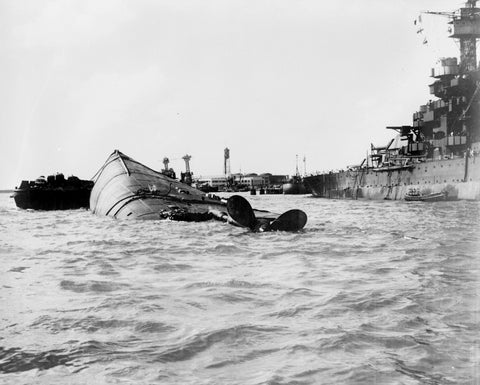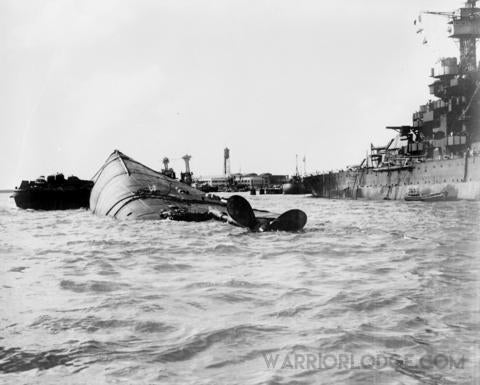 Words By Mike Weisbecker, USAF Ret.
Words By Mike Weisbecker, USAF Ret.
7 December 1941 saw a lot of death and destruction upon our naval base at Pearl Harbor. None more so than the battleship USS Oklahoma. Hit by three torpedoes, she eventually capsized, her masts digging into the harbor floor and exposing her keel. Many of the survivors scrambled onto surrounding ships to continue the fight. Three Medals of Honor, three Navy and Marine Corps medals, and one Navy Cross were awarded to Oklahoma crewmen from events on that day. The first chaplain to perish in action in that war was one of the ship’s chaplains.

429 Sailors and Marines of the ship’s compliment perished that day trapped in the capsized ship. Only 36 were positively identified. The remaining 393 are buried in comingled graves at the National Memorial Cemetery of the Pacific (known as the Punchbowl). It is the single largest burial of unknowns at the cemetery.
Fast forward to the present. Many family members of the unidentified crewmembers want to have the bodies exhumed to have DNA tests performed upon them. Even 70 plus years later the families want closure.
The remains in some cases took years to be removed from the capsized ship. Salvage didn’t begin in earnest until July of 1942. Salvage crews and divers recovered some in the actions to prepare the ship to be righted and refloated but most were recovered once the ship was in dry-dock. Then the remains were buried at different cemeteries until exhumed right after the war in an attempt to identify them. After this attempt the remains were once again interned at the Punchbowl.

Some argue that the crew has been together and should stay together. What if some can’t be identified? Would the identified crewmen want to be with their shipmates in death? The survivors of the USS Arizona are allowed to have their cremated remains interred in the ship to rejoin their shipmates in eternity. Survivors of other ships attacked that day can have their ashes scattered near where their ships were moored that fateful day.
DOD will make a decision in the next few weeks. Yeah, there will be a cost attached to this. But even after more than seventy years, some families want their loved ones remains identified to get some closure, to bring them home to a family plot maybe, or to have their ashes scattered over a plot of land the family called home for generations. Not being in the situation I’m more inclined to leave them where they are, united as shipmates forever.



Leave a comment
This site is protected by hCaptcha and the hCaptcha Privacy Policy and Terms of Service apply.